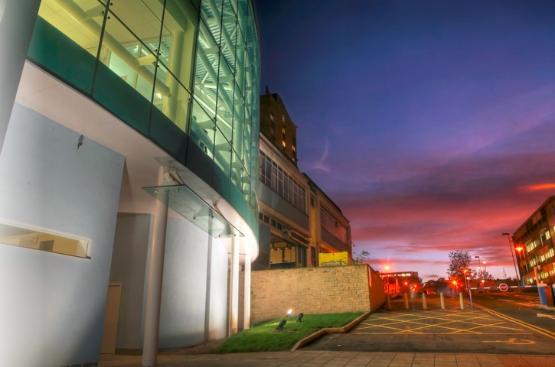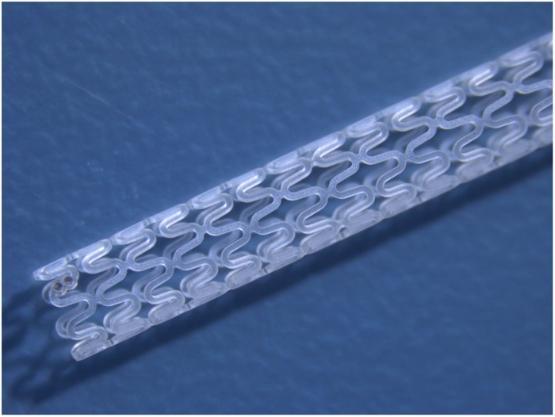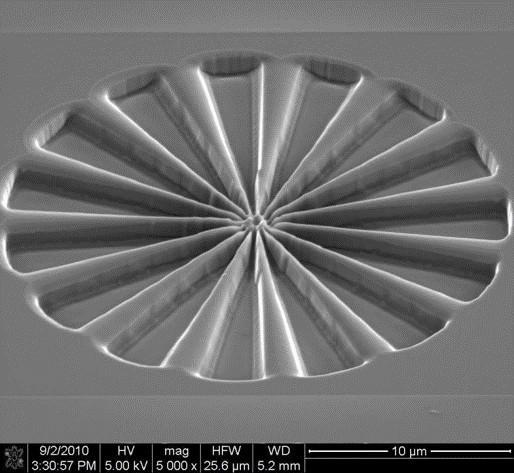Marvellous materials and where to find them: at the Polymer IRC

The University of Bradford’s Polymer Interdisciplinary Research Centre (IRC) is home to some of the UK’s most technologically advanced science and engineering equipment and some of the world’s leading researchers. The centre’s director, Professor Phil Coates, explains how they design and make materials with truly astonishing properties.
Heart stents made of 'bioresorbable' plastic. 'Shape memory' tissue fixings to re-join broken bones. 'Plastic' hurricane resistant wood. 'Electro-spun' polymer mesh for advanced drug delivery. Microscopic 'anti-counterfeit' mouldings, including QR codes invisible to the naked eye. Microneedles for painless drug delivery. Synthetic ropes strong enough to tether oil rigs. All these products and many more, might sound like the stuff of science fiction, but they are all examples of innovations created by the University of Bradford's world-leading Polymer IRC.
And they are proving that, in a world where plastic is public enemy number one, if you know how to manipulate it, it can be transformed into a miracle material.
“Plastic has a bad press,” admits Professor Phil Coates, director of the University of Bradford’s world-leading Polymer IRC, a triumvirate of research centres based on campus. “But we’re doing amazing things with it,” he adds.
Things like making hurricane and insect resistant ‘plastic wood’, ‘tensile geogrids’ to prevent soil erosion at airports, microscopic QR codes (invisible to the nake eye) to prevent fraud, microneedles for pain free drug delivery, virtually unbreakable super-lightweight suitcases, pressure pipes which surpass current market leaders, and heart stents that dissolve harmlessly into your body once their job is done.
Below: close-up of polymer 'bio-resorbable' heart stent

The Polymer IRC is, in effect, part of Bradford’s ‘science triangle’, when combined with the Norcroft Building Pharma and Materials Chemistry labs, and the Institute of Cancer Therapeutics. It is a focal point for original research that is changing the world for the better.
“The facilities we have here are some of the best in the world,” says Prof Coates, who has been building these teams and facilities in the University for over 40 years. What we have is really quite unique. Any university would be proud to have what we have here.
“With our polymer research, what we are essentially doing is changing otherwise ordinary plastics into something with quite remarkable load-bearing properties, in applications from stents to buildings. Once you understand how to do that, you can create better, cheaper and more consistent products. It’s why we work with over 100 companies and organisations across the world.”
Examples include the Bill & Melinda Gates Foundation, Dyson, Kimberley Clark, Sinopec, BASF and SABIC to name just a few major collaborators, and while some of the research here is veiled behind commercial confidentiality agreements, examples of previous achievements and ongoing research abound.
The Polymer IRC main laboratories (housing the Advanced Materials Engineering and the Polymer Micro & Nano Technology RKT Centres) alone sprawls across three floors, ranging from industrial scale concrete-floored engineering workshops to air-sealed clean rooms and labs able to handle Class 2 biohazards.
Housed across these facilities stands millions of pounds-worth of equipment. There is an atomic force microscope, capable of ‘tapping’ the surface of materials and taking measurements on the nano-metre scale. Another machine performs micro moulding (to create those tiny QR codes), and yet another performs ‘electro-spinning’ to create a fine polymer mesh used to enhance drug delivery.
Below: image of a 'micro-moulded' shape.

Indeed, healthcare research is one of the Polymer IRC’s primary functions and was also a major driver behind the Science Bridges China partnership, which creates a link between researchers in the UK and China; its UK-China Advanced Materials Research Institute has just marked its 10th anniversary.
Prof Coates says: “All of the three centres within the Polymer IRC have different areas of research but what ties them all together is that they pursue the controlled structuring of polymers and polymer-related materials, to create products which have enhanced properties.”
That process - of turning the ordinary into the extraordinary – involves, for example, taking common polypropylene and pulling it through a die, which changes its properties considerably. The resultant material is then further engineered, perhaps by weaving or laser-cutting, to create materials with truly marvellous properties.
The IRC can already lay claim to the creation of medical devices including eye surgery devices, ‘shape memory’ screws to heal broken bones or fix ligaments to bone, micro-needles for painless drug delivery, spinal braces, structured wound dressings and dental implants, not to mention new technology to make industrial processes more efficient and eco-friendly, such as the recently licenced Effershine/Effershield line of products.
Prof Coates adds: “Plastic might have a bad press but it still has a use - and we’re showing that by changing its properties and engineering it at the nano-scale, we can create new healthcare solutions - and a wide range of products for a wide range of industries - that will ultimately improve people’s lives and help safeguard the environment.”
